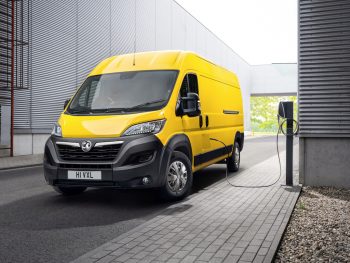Light commercial vehicle (LCV) registrations continued their strong start to 2023 with a 17.3% rise in March, supported by strong battery electric van demand.

A total of 47,634 LCVs were registered last month, according to the latest figures published today by the Society of Motor Manufacturers and Traders (SMMT).
It’s the third month of successive growth, providing further evidence that supply chain issues are easing, and helped by the arrival of the new number plate and comparison to a weak March last year.
Registrations increased across the majority of segments, primarily driven by mid-size vans (greater than 2.0 to 2.5 tonnes ) and 4x4s, up 66.3% and 183.4% respectively. The pickup segment also saw double-digit growth, up 29.3%, while registrations of vans weighing greater than 2.5 to 3.5 tonnes increased marginally by 4.9%, as market share declined to 64.3%.
Compact vans, weighing up to and including 2.0 tonnes, fell 24.6%, reflecting the switch to larger vehicles.
Year-to-date figures show growth of 17.4% to 87,272 units for the first quarter of 2023 – but the market is still 15.1% below pre-pandemic 2019 Q1 as supply chain challenges linger on.
Take-up of battery electric vans continued to rocket, up by 32.7% to 2,534 vans, supported by the growing choice of vehicles. But the SMMT said van-compatible charging infrastructure remains the biggest barrier to uptake. It also warned that the upcoming ZEV mandate – confirmed for 2024 in the new consultation launched last week – will require infrastructure providers to “catch up” with the commitments made by vehicle manufacturers.
Mike Hawes, SMMT chief executive, said: “A solid first quarter of growth for the van market is a positive outcome, given the importance of vans in keeping Britain’s businesses on the move. These working vehicles are also essential in helping Britain decarbonise, so all barriers to uptake must be removed to accelerate fleet renewal.
“The most important requirement now is the urgent development of widespread and dependable van-suitable charging infrastructure to bolster operator confidence to make the switch.”

